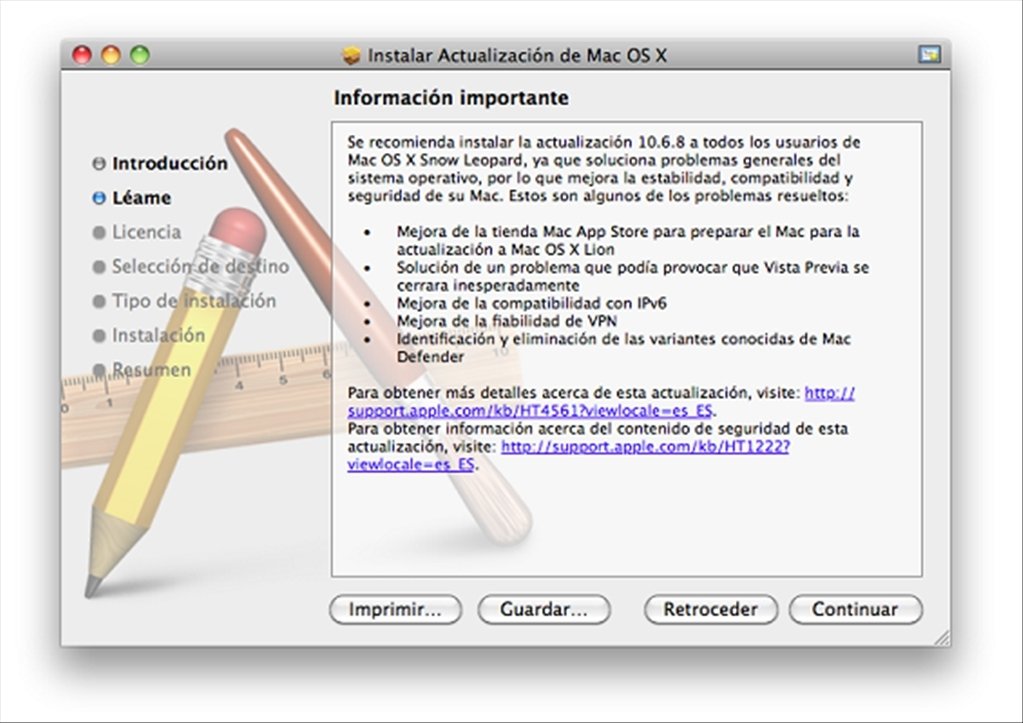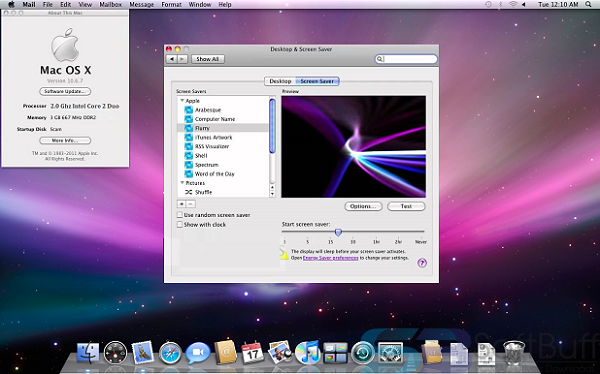

- #Mac os x snow leopard 10.6 0 patched download for pc update
- #Mac os x snow leopard 10.6 0 patched download for pc password
- #Mac os x snow leopard 10.6 0 patched download for pc mac
#Mac os x snow leopard 10.6 0 patched download for pc mac
New options to enforce using the internal (built-in) display of a MacBook or iMac but optionally still allowing to use the external display on a Mac without built-in display (Mac Mini, Mac Pro).Assessment Mode also cannot be used if you want to run a video conferencing solution in the background during an exam for proctoring. Optionally, the old SEB kiosk mode can be used also on latest macOS versions (see Preferences / Security / "Use Assessment Mode (AAC) if available", settings key enableAAC), as AAC doesn't support optionally enabling features like like screen capture/sharing, Siri and Dictation.Also no other applications and processes running in the background can access the network while Assessment Mode is active. Assessment Mode blocks various macOS features which shouldn't be accessible during exams. AAC is used by default if running on macOS 10.15.4 or newer.

Support for Automatic Assessment Configuration (AAC) macOS Assessment Mode.Release notes for Safe Exam Browser version 2.3: seb configuration file onto the SEB app icon). Use the new feature to open the Preferences window without locking SEB: Hold the option/alt key when starting SEB by opening the app icon (or dropping a. In the file dialog, you cannot change the file name when using "Save As".Press cmd -, (comma key) in that case and the window appears again. When switching Preferences panes, the Preferences window sometimes disappear.The domain of the Start URL should always be loadable, as SEB reaches out to the Start URL before activating AAC. Usually it would connect to the according domain after quitting and starting SEB again (as the DNS lookup result is cached). This is why SEB fails to load URLs with a different domain than the Start URL the first time it tries to connect to that URL. When running on macOS 11 Big Sur, DNS lookup fails while AAC is enabled.Known issues while using Assessment Mode in macOS 11:
#Mac os x snow leopard 10.6 0 patched download for pc password
Fixed security issue with "Revert to Client Settings" and "Configure Client" in Preferences: Don't ask for client settings admin password if none is set.Fixed force "Quit All Processes" alert was sometimes displayed behind process list window.Clicking the close button of the running prohibited processes list window now quits SEB/the exam session.Fixed URL String from pasteboard to copy to Preferences/General/Start URL is not saved when SEB is started in AAC.Block screen capture also when AAC is used (as AAC currently doesn't prevent screen capture reliably).Changed default setting for AAC to disabled, using a new settings key enableMacOSAAC.We recommend to not use AAC until this issue will be fixed in an upcoming macOS Big Sur update. SEB 2.3.1 is a maintenance update, which disables Automatic Assessment Configuration (AAC) macOS Assessment Mode in default settings, as it has a major issue when used on macOS 11 Big Sur. Release notes for Safe Exam Browser version 2.3.1: Now system processes should be identified correctly both on Intel and Apple Silicon based Macs. When running on macOS 11 Big Sur on Intel CPU based Macs (tested on macOS 11.2.3), system processes displaying UI in the foreground were not recognized as system applications and terminated by SEB or locked SEB (displaying a red lock screen) if SEB couldn't terminate them.
#Mac os x snow leopard 10.6 0 patched download for pc update
SEB 2.3.2 is a minor update for 2.3.1 with one bug fix: The Mac App Store update for Snow Leopard can be retrieved by selecting "Software Update." from the Apple menu.Release notes for Safe Exam Browser version 2.3.2: Additionally, Snow Leopard was the final version able to run on Macs equipped with 32-bit Intel processors, making it impossible for owners of some older machines to move beyond 10.6. The 1-in-20 Mac owners who have hung on to Snow Leopard have proffered several reasons for sticking with the aged OS, including that it was the last version of OS X able to run applications designed for the PowerPC processor, the Apple/IBM/Motorola-crafted CPU used by Apple before it switched to Intel in 2006. Although that paled in comparison to El Capitan's user share (42.6% of all Macs) or even Mavericks (11.7%), it was larger than for successors like 2011's Lion (4%) and 2012's Mountain Lion (4%). There are still Macs running Snow Leopard: According to Web measurement vendor Net Applications, OS X 10.6 powered 4.8% of all Macs last month. Under that scheme, Snow Leopard was "n-3," and thus retired, when OS X 10.9, aka Mavericks, shipped in 2013.īecause OS X upgrades are delivered through the Mac App Store, Snow Leopard required access to the mart for users to migrate from the 2009 edition to a newer version, such as 10.11, or El Capitan.

Apple now patches the OS X editions designated as "n," "n-1" and "n-2," where "n" is the newest.


 0 kommentar(er)
0 kommentar(er)
